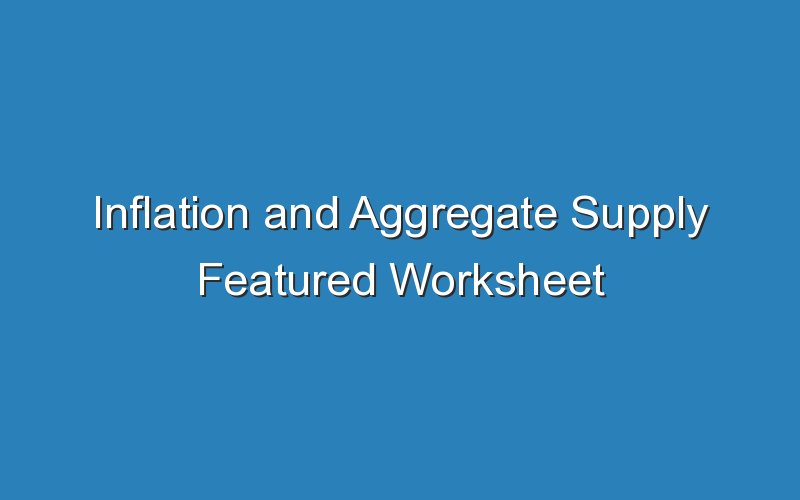Aggregate supply is the quantity of goods and services produced in an economy. It is the total amount of output, or real GDP, produced by all firms. This type of supply curve differs from that of the price level, which is the price at which goods are sold. Inflation, on the other hand, is the change in price over time between two prices. It’s a good idea to understand how these two quantities interact, so that you can determine how to increase the aggregate supply of goods and services.
The aggregate supply curve shows the relationship between aggregate prices and the total quantity of output in an economy. In the short run, prices rise, while output decreases. The aggregate supply curve also shows how prices change over time. During a period of high inflation, the price of goods and services rises. Meanwhile, the price of goods and services decrease. These changes are reflected in the price levels of goods and services. Consequently, a rise in aggregate demand can lead to a decline in aggregate supply.
The aggregate supply curve shows the relationship between aggregate price levels and the total quantity of goods and services produced in an economy. It is a positive relationship in the short run, with a rise in price accompanied by a decline in output. Profits per unit of output are directly related to price, and a decline in prices reduces profits. When the prices of goods and services fall, the demand for those goods and services decreases.
When analyzing a country’s economic activity, it is helpful to understand how the prices and outputs change over time. As real GDP increases, aggregate supply increases. As the price level falls, aggregate demand decreases. While prices rise, real GDP stays the same. Ultimately, the price of goods and services is determined by the quantity of output. This is how the economy makes money. When the price increases, aggregate supply declines.
A vertical line at potential GDP may also be referred to as the long-run aggregate supply curve. In this case, the price level will rise and the output will decrease as a result of the changes in the price. The price level increases, but so does the production cost. The price increases in the short-run and the output falls. Both are positive in the long-run. The total amount of output is determined by the production costs.
Aggregate supply is the quantity of goods and services in an economy. It represents the total amount of output and the total price level. In a perfectly elastic economy, the price level is positively related to the quantity of output. This means that, as prices increase, the aggregate supply also rises. This is an ideal situation for consumers, but there is no perfect economy. If the economy is thriving, it is profitable for firms.
A perfectly elastic supply curve is a perfectly symmetrical curve, and it represents the quantity of goods and services produced in an economy. When the price level rises, real GDP will fall. The other way around, this is the perfect elastic curve. If the price is lower, there will be less output. Inelastic aggregate supply is inelastic and is a perfectsymmetrical curve. However, the long run is inelastic, and it will always be the same.
A perfectly elastic aggregate supply curve is an inelastic supply curve. It is a perfectly inelastic curve because it depends on the price of the inputs. This is why the demand for an output is asymmetrical. Inelastic demand and the aggregate supply are asymmetrical. This is because the demand and the price are the same. It’s important to note that inelastic aggregate supply is asymmetrical.
The price level is a function of aggregate supply. The more output there is, the lower the price. Therefore, the price should be based on the demand of the market. The total GDP is the total amount of goods and services. When this is low, the prices will decrease. The prices must be low to prevent inflation. Asymmetrical prices mean that the economy is inefficient. While this can have some advantages, it is uneconomical.

